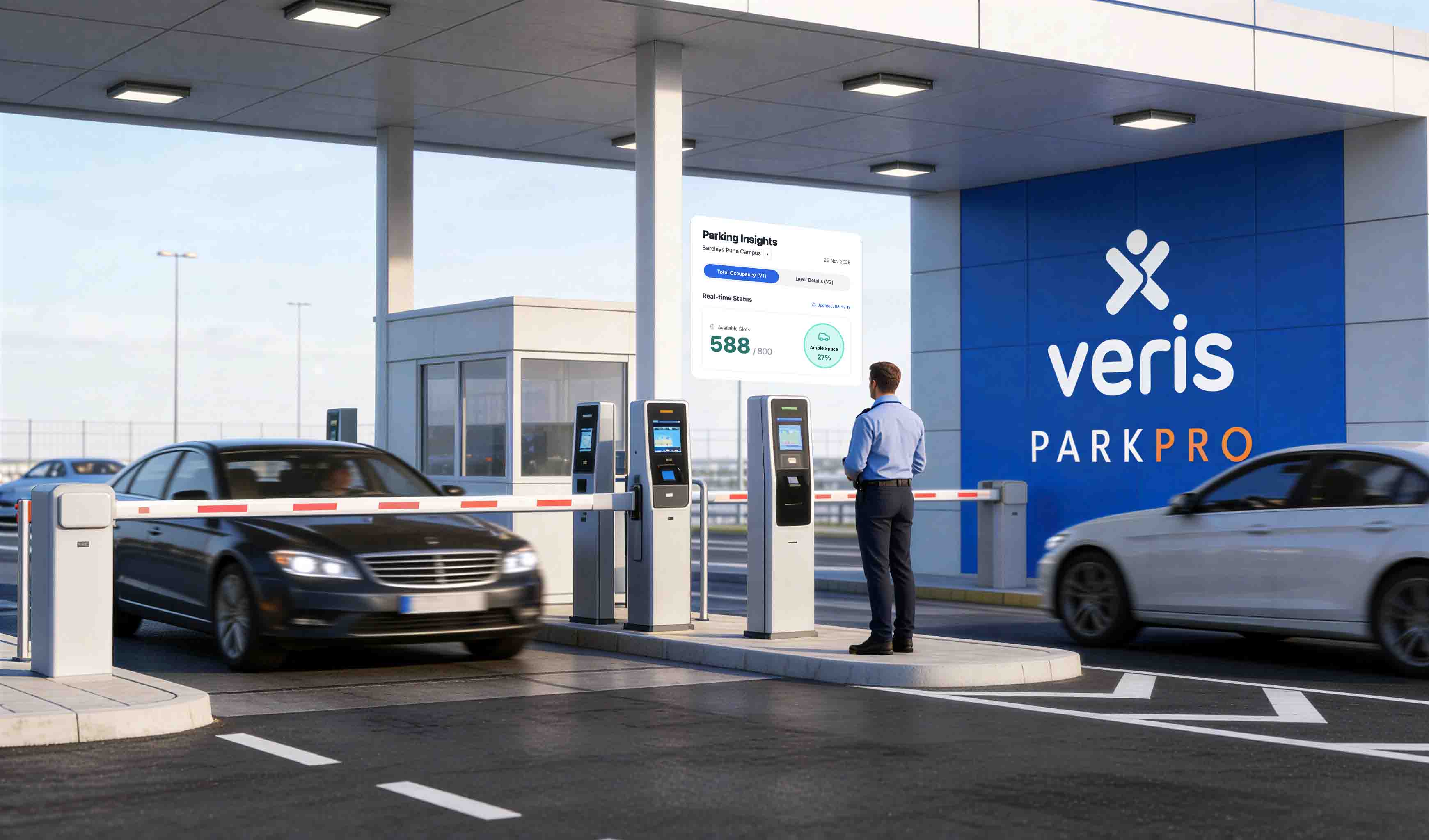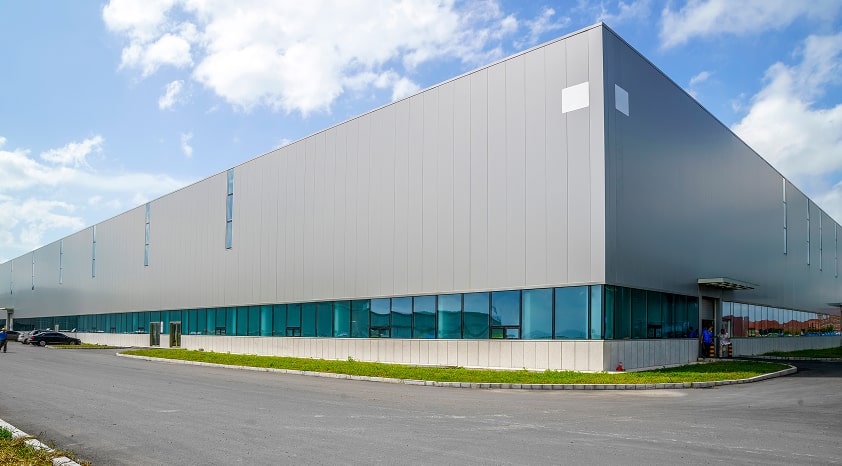Workplace security, in essence, refers to the measures and protocols put in place to safeguard the physical, intellectual, and human assets within a working environment. It encompasses a wide spectrum of strategies and technologies aimed at preventing and mitigating security risks, ranging from unauthorized access and theft to more complex challenges like insider threats and cyber-physical attacks that can impact your workplace.
Workplace security has evolved far beyond traditional lock-and-key systems. It now integrates advanced technologies such as access control systems, video surveillance, etc. These tools are strategically employed to create a secure and conducive atmosphere for your employees, visitors, and stakeholders while simultaneously addressing evolving threats and compliance requirements.
The overarching goal of workplace security is not only to protect tangible assets but also to foster a safe, productive, and resilient work environment. It aligns with the broader objectives of an organization by promoting employee well-being, ensuring business continuity, and preserving the reputation and trust of the workforce and clients alike.
Download the handbook now!

What are the big shifts shaping the physical security of workplaces today?
Today, we bring you rich and real-time insights into the key challenges and needs that post-pandemic workplaces are experiencing from an employee-centricity point of view. These are based on interactions with heads of departments of security, facility, administration, etc.
In the last edition of Office of 2023, we talked about a key pillar of workplace transformation, i.e., employee centricity. We discussed what it takes to dial up the ‘human factor’ of workplaces based on our conversations with several workplace enablers across sectors and roles.
In this blog, we will discuss another key pillar: physical security.
While physical security has always been an essential pillar of concern, the pace at which it is evolving has been accelerated by the post-pandemic shifts in the workplace.
In our conversations with CISOs, CTOs, VP & directors of Physical Security, we have discussed these shifts at length and arrived at certain challenges that become even more pronounced in the world of physical security today.
We have also attempted to understand from them the need of the hour and ways to mitigate these challenges. We will be talking about these in the upcoming weeks.
The lines of defence are becoming more fluid than ever
A common consensus amongst all the experts across industries is how workplaces have become more fluid. The pandemic surely has been the biggest contributor, though probably not the only one.
Even before the pandemic, we moved towards more digital, remote, and hybrid-led work models because the human resources to run workplaces are no longer bound by centralized physical spaces or geographies.
This has meant that the physical security perimeter has also become more fluid.
Organizations of all shapes and sizes have been re-evaluating their traditional and erstwhile go-to’s in search of newer ones that cover a wide range of stakeholders – visitors, employees, contractors, vendors and more with the agility and future forwardness required today.
The definition of how people access their workplaces is changing, and thus, how security is offered to them also needs to change. This need is becoming more urgent, given some macro shifts impacting physical security at workplaces today.
Evolving threat landscape
Today, security heads are grappling with a fast-evolving threat landscape as criminals and disrupting elements have found newer ways of exploiting organizational vulnerabilities arising from the pandemic.
There is a need to have an agile strategic roadmap that takes into account all the plausible incoming risks along with their operational details (e.g. possible entry points), tactical form (e.g. the newer attacker methodologies) and technical details (e.g. their specific nature/ source).
With unpredictable footfall and movement in and out of workplaces today, there is a higher risk of physical attacks, burglaries, and thefts targeting workplaces, supply chains, or critical infrastructure.
Security teams are enhancing perimeter security, conducting threat assessments, and collaborating with local law enforcement agencies to mitigate these risks. However, this alone is not enough. There is a need for security heads and experts to create on-ground, internal and external checkpoints that can track movements over a period of time to map trends. After all, forewarned is forearmed.

Continuation of health and safety compliances
The pandemic has heightened the focus on health and safety measures in workplaces. Even though ‘new normalcy’ has been around for a while, security heads are concerned about maintaining compliance with regulations and guidelines related to occupancy, sanitization, outsider movement, contactless interactions, etc.
The pandemic has wizened everyone to take a more pre-emptive approach to health and safety than a reactive one. Thus, workplaces are implementing access management solutions to enforce health and safety protocols, including touchless access controls, occupancy monitoring systems, and visitor management tools.
Growing importance is also being laid on accumulating and monitoring data from these touch-points to get an overview of what’s working and what’s not so that future readiness towards any possible health and safety threats can be ensured.

Supply chain security and resilience
Disruptions to global supply chains during the pandemic have highlighted vulnerabilities and security gaps like never before. Here are some staggering figures:

While one may look at these as post-dated facts, the truth is that the pandemic showed how vulnerable the supply chain is to unexpected events. Something that pushes us to be better prepared for the future than look at these as only events in the past.
Given these vulnerabilities’ operational and financial impact, it is imperative to bolster physical security and make it more resilient in the post-pandemic era.
To do this, security heads prioritise supply chain security by implementing strict access controls, conducting due diligence on suppliers, securing transportation routes, and leveraging technology such as GPS tracking and real-time monitoring to enhance supply chain resilience and mitigate theft, tampering, or counterfeiting risks.
However, it is critical to ensure that these efforts are all centralized so that they help not only track but also help predict what needs to be done in the future.
Insider threats in a hybrid work environment
In a hybrid work environment, where employees divide their time between remote work and office attendance, specific insider threats to physical security have grown.
For example, one key insider threat is unauthorized access to physical premises. With a reduced on-site workforce, there may be instances where employees or individuals with malicious intent exploit the lower occupancy levels to gain unauthorized access to restricted areas.

Another insider threat in a hybrid work environment is the potential mishandling or theft of physical assets and sensitive information. Employees working remotely may access physical documents, equipment, or company-owned devices containing valuable or confidential data.
Organizations must implement measures such as enhanced access controls, surveillance systems, and employee awareness programs to address these insider threats.
Regular security audits and assessments can help identify vulnerabilities and ensure appropriate physical security protocols are in place. By adopting a proactive approach, organizations can safeguard their assets, protect sensitive information, and maintain a secure work environment, on-site and remote.

Remote security monitoring
The ability to remotely monitor workplace security has become increasingly important. Security heads leverage technologies such as remote video surveillance and alarm systems to ensure real-time monitoring and response, even when physical presence is limited.
Advancements in video surveillance technologies are on the way to transforming workplace security like never before.
High-definition cameras, video analytics, and cloud-based storage systems provide security heads with real-time monitoring and threat detection capabilities.

Integration of access control systems
As security heads strive to ensure a safe and secure environment, implementing advanced access control technologies has become imperative.
These systems offer a comprehensive and efficient approach to managing and regulating physical access, mitigating security risks, and safeguarding employees and assets.
Integrated access control systems provide a centralized platform that combines various components, including biometric authentication, RFID cards, and facial recognition, to streamline granting and restricting access.
By leveraging these technologies, security heads can establish strict control over entry points, allowing only authorized personnel to enter designated areas. This prevents unauthorized access, deters potential threats, and acts as a robust deterrent.
The market for access control systems is witnessing significant growth, reflecting the increasing demand for more robust physical security measures.
According to a report by MarketsandMarkets, the global access control market is projected to reach a value of $12.8 billion by 2025. This surge is driven by the need for advanced access control solutions capable of addressing evolving security challenges.
However, the advantages of integrated access control systems extend well beyond conventional security measures.
By implementing such systems, organizations can achieve operational efficiencies by automating visitor management, attendance tracking, and access logs. This reduces administrative burden and optimizes resource allocation, enabling security personnel to focus on proactive threat detection and response.
Furthermore, integrated access control systems provide valuable data and analytics to enhance decision-making. Security heads can gain insights into access patterns, identify potential vulnerabilities, and optimize security protocols accordingly. This data-driven approach empowers organizations to continually improve their physical security strategies and adapt to evolving threats.

Summary: Insights into everything workplace security
By gaining awareness and insight into these shifts in the physical security landscape, security heads can enhance the overall security posture of their enterprises.
To understand these challenges better, stay tuned for our next blog in this blog series, which will be all about challenges and threats to physical security. Furthermore, we will also be exploring what the need of the hour is to address these challenges, and how they are forming the bottleneck to
It can help protect against emerging threats in the post-pandemic environment. However, at the same time, certain challenges are borne out of these shifts that must be addressed to manifest their maximum impact truly.
Download the handbook now!





































.avif)
.avif)





